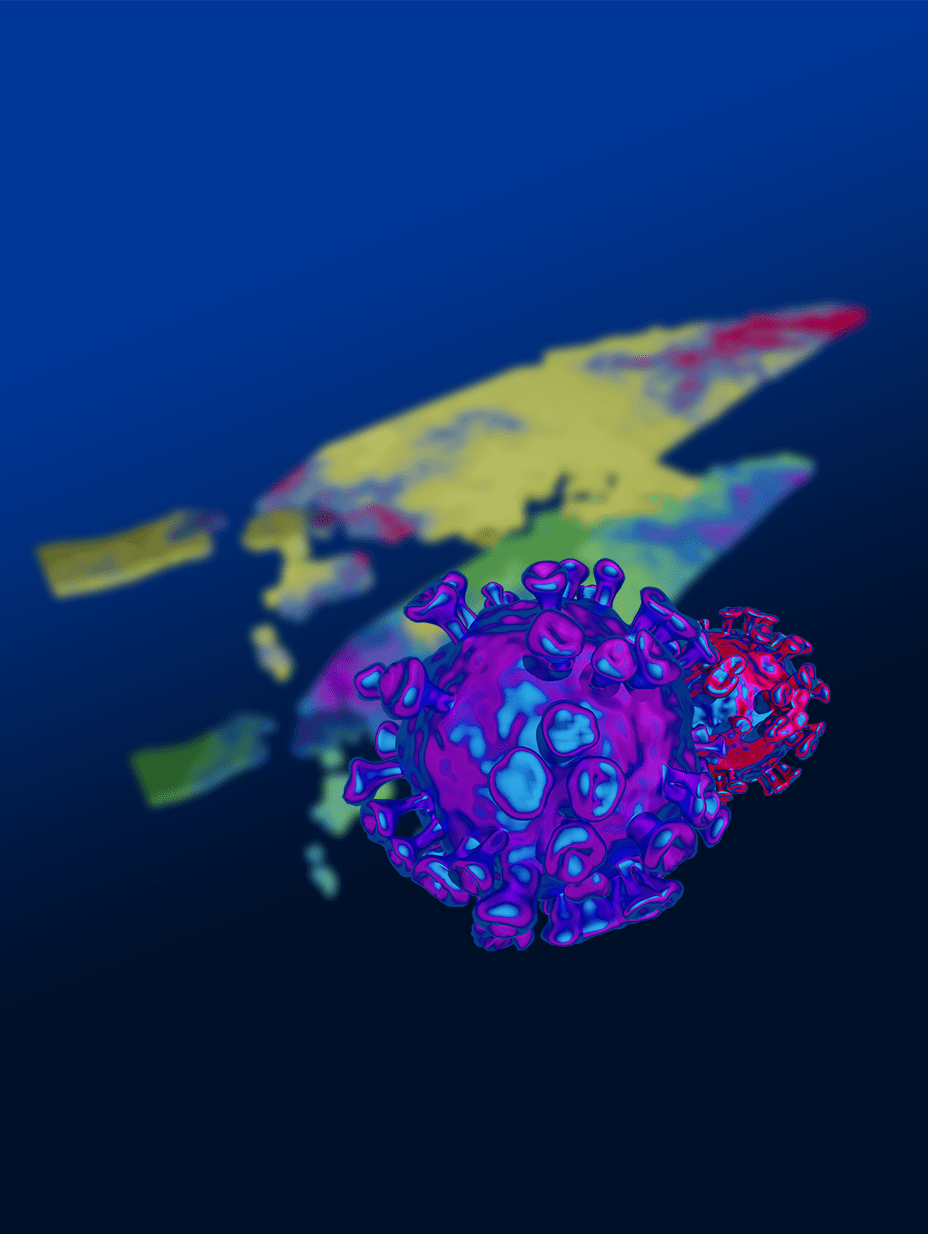Selected Publications
ASSISTIVE TECHNOLOGIES

Visual impairments are a form of disability that have an increasing, alarming incidence on a global scale. These disabilities yield poor quality of life and severe health consequences, mostly associated with the reduction in mobility. Despite the severity of the situation, options for enhancing the mobility of persons with visual impairments remain limited and low-tech. We focus on the development of new inconspicuous assistive technologies for the navigation and obstacle avoidance of persons with visual impairments, by integrating soft actuators for haptic feedback and a computer vision system for obstacle identification. Further, we seek to provide innovative solutions for the development of assistive technologies, such as multifunctional virtual reality platforms to simulate visual impairments, which can be utilized to raise disability awareness in outreach activities with the general public, test electronic travel aids in a safe and controlled environment, and train persons with visual impairments in orientation and mobility techniques and electronic travel aids.
-
Ricci, F. S., Boldini, A., Beheshti, M. Rizzo, J.-R., Porfiri, M., 2023: “A virtual reality platform to simulate orientation and mobility training for the visually impaired”, Virtual Reality 27, 797–814
-
Ricci F. S., Boldini, A., Ma, X., Beheshti, M., Geruschat, D., Seiple, W., Rizzo, J.-R., Porfiri, M., 2023: “Virtual reality as a means to explore assistive technologies for the visually impaired”, PLOS Digital Health 2(6), e0000275
-
Boldini, A., Garcia, A. L., Sorrentino, M., Beheshti, M., Ogedegbe, O., Fang, Y., Porfiri, M., Rizzo, J.-R., 2021: “An inconspicuous, integrated electronic travel aid for visual impairment”, ASME Letters in Dynamic Systems and Control, 1(4), 041004
-
Phamduy, P., Rizzo, J.-R., Hudson, T., Torre, M., Levon, K., Porfiri, M., 2018: “Communicating through touch for assistive technology: Macro fiber composites for vibrotactile stimulation on the abdomen”, IEEE Transactions on Haptics 11(2), 174-184
COLLECTIVE BEHAVIOR AND COORDINATION

Many real-world physical, biological, and social systems are formed by a large number of interacting units, from which emergent collective behaviors arise. We are interested in developing techniques to understand the collective behavior of these systems from measurements on some of their units, as well as tools for controlling them and supporting the overall coordination of the units. We apply these methodological advances to a variety of systems, such as robot swarms for collective additive manufacturing and animal groups in different conditions.
-
Porfiri, M., De Lellis, P., Aung, E., Meneses, S., Abaid, N., Waters, J. S., Garnier, S., 2024: “Reverse social contagion as a mechanism for regulating mass behaviors in highly integrated social systems”, PNAS Nexus 3(7)m pgae246
-
Maffettone, G. C., Boldini, A., di Bernardo, M., Porfiri, M., 2023: “Continuification control of large-scale multiagent systems in a ring”, IEEE Control Systems Letters 7, 841-846
-
Tuqan, M., Boldini, A., Porfiri, M., 2023: “Network inference from local measurements: application to coordination of groups of mobile 3D printers”, Journal of Dynamic Systems, Measurement, and Control 145(1), 011006-9
-
De Lellis, P., Porfiri, M., 2022: “Inferring the size of a collective of self-propelled Vicsek particles from the random motion of a single unit”, Communications Physics 5, 86 (Cover image of the journal)
-
Porfiri, M., 2020: “Validity and limitations of the detection matrix to determine hidden units and network size from perceptible dynamics”, Physical Review Letters 124(16), 168301
ENVIRONMENTAL MIGRATIONS

Global warming is expected to significantly change the weather and environment of inhabited regions of the world. Sea-level rise will cause the disappearance of many coastal regions, while modifications in the climate will elicit increased droughts, floods, and extreme events. In turn, these environmental factors will push many to migrate to other areas. We are currently working on the development of models that can predict these environmental migrations, to support the design of strategies and infrastructure to mitigate their consequences. These mathematical models ought to capture the complex relationship between environment, infrastructure, society, and economy, elucidating the complex mechanisms that lead to migrations. Ultimately, the results of this effort are crucial for the future of our cities and society.
-
De Lellis, P., Ruiz Marin, M., Porfiri, M., 2021: “Modeling human migration under environmental change: a case study of the effect of sea level rise in Bangladesh”, Earth’s Future 9(4), e2020EF001931
-
Porfiri, M., Ruiz Marin, M., 2020: “An information-theoretic approach to study spatial dependencies in small datasets”, Proceedings of the Royal Society A: Mathematical, Physical & Engineering Sciences 4762, 0200113
EPIDEMIC SPREADING IN CITIES

The COVID-19 pandemic demonstrated that the world is ill-equipped to face the global epidemics that will likely surge in the next century. Cities play a significant role, serving as hubs for spreading. We still have a poor understanding of how to face these processes while accounting for the national and international mobility characteristic of modern society, as well as the complexity of micro-scale transmission mechanisms. We propose the development of new mathematical tools to describe epidemic spreading in cities, as well as simulation frameworks to evaluate pharmaceutical and non-pharmaceutical interventions. Our research focuses on developing interpretable results and “what-if” analyses for public health experts and policy makers, which in turn can be translated into concrete strategies and interventions.
-
Zino, L., Rizzo, A., Porfiri, M., 2023: “The impact of deniers on epidemics: A temporal network model”, IEEE Control Systems Letters 7, 685-690
-
Truszkowska, A., Fayed, M., Wei, S., Zino, L., Butail, S., Caroppo, B., Jiang, Z-P., Rizzo, A., Porfiri, M., 2022: “Urban determinants of COVID-19 spread: A comparative study across three cities in New York State”, Journal of Urban Health 99, 909–921
-
Truszkowska, A., Behring, B., Hasanyan, J., Zino, L., Butail, S., Caroppo, E., Jiang, Z.-P., Rizzo, A., Porfiri, M., 2021: “High-resolution agent-based modeling of COVID-19 spreading in a small town”, Advanced Theory and Simulations 4(3), 2000277
-
Zino, L., Rizzo, A., Porfiri, M., 2016: “Continuous-time discrete-distribution theory for activity-driven networks”, Physical Review Letters 117(22), 228302
FISH LOCOMOTION

The locomotion of fish alone and in groups is full of fascinating questions that are yet to be fully answered. Why are fish schooling? How can they coordinate among themselves to school? How can fish orient themselves against a flow, even in the dark? These are some of the questions that we are trying to answer, through an integrated theoretical, computational, and experimental approach that combines mathematical modeling, computational fluid dynamics simulations, and experiments with live and robotic fish. Not only do we aim to better understand the biology and ethology of fish, but also to translate these discoveries to build more efficient, nature-inspired engineering systems.
-
Das, R., Peterson, S., Porfiri, M., 2023: “Stability of schooling patterns of a fish pair swimming against a flow”, Flow: Applications of Fluid Mechanics 3 (E31)
-
Porfiri, M., Zhang, P., Peterson, S., 2022: “Hydrodynamic model of fish orientation in a channel flow”, eLife 11, e75225
-
Polverino, G., Soman, V. R., Karakaya, M., Gasparini, C., Evans, J. P., Porfiri, M., 2022: “Ecology of fear in highly invasive fish revealed by robots”, iScience 25, 103529
-
Porfiri, M., Karakaya, M., Sattanapalle, R. R., Peterson, S. D., 2021: “Emergence of in-line swimming patterns in zebrafish pairs”, Flow: Applications of Fluid Mechanics 1(E7)
-
Karakaya, M., Macri, S., Porfiri, M., 2020: “Behavioral teleporting of individual ethograms onto inanimate robots: experiments on social interactions in live zebrafish”, iScience 23(8), 101418
THE UNITED STATES FIREARM ECOSYSTEM

Firearm-related violence is a serious public health issue in the United States. As deaths due to firearms have surpassed motor vehicles deaths, it is staggering that little is known about the determinants of firearm-related violence. Through this project, we aim to develop engineering tools to understand and design interventions on the “firearm ecosystem”, the complex interplay between firearm acquisition, firearm-related violence, firearm policies, law enforcement, and public opinion. Our ultimate goal is to unravel the drivers of injuries and deaths related to firearms, informing the design of strategies that can reduce these outcomes.
-
Succar, R., Porfiri, M., 2024: “Urban scaling of firearm violence, ownership, and accessibility in the United States“, Nature Cities 1, 216–224
-
Succar, R., Barak Ventura, R., Belykh, M., Wei, S., Porfiri, M., 2023: “Fame through surprise: How fame-seeking mass shooters diversify their attacks”, Proceedings of the National Academy of Sciences of the United States of America 120(20), e2216972120
-
Barak Ventura, R., Ruiz Marin, M., Porfiri, M., 2022: “A spatio-temporal model of firearm ownership in the United States of America”, Patterns 3, 100546
-
Porfiri, M., Barak Ventura, R., Ruiz Marin, M., 2020: “Self-protection versus fear of stricter firearm regulations: examining the drivers of firearm acquisitions in the aftermath of a mass shooting”, Patterns 1(6), 100082
-
Porfiri, M., Sattanapalle, R. R., Nakayama, S., Macinko, J., Sipahi, R., 2019: “Media coverage and firearm acquisition in the aftermath of a mass shooting”, Nature Human Behaviour 3(9), 913-921
